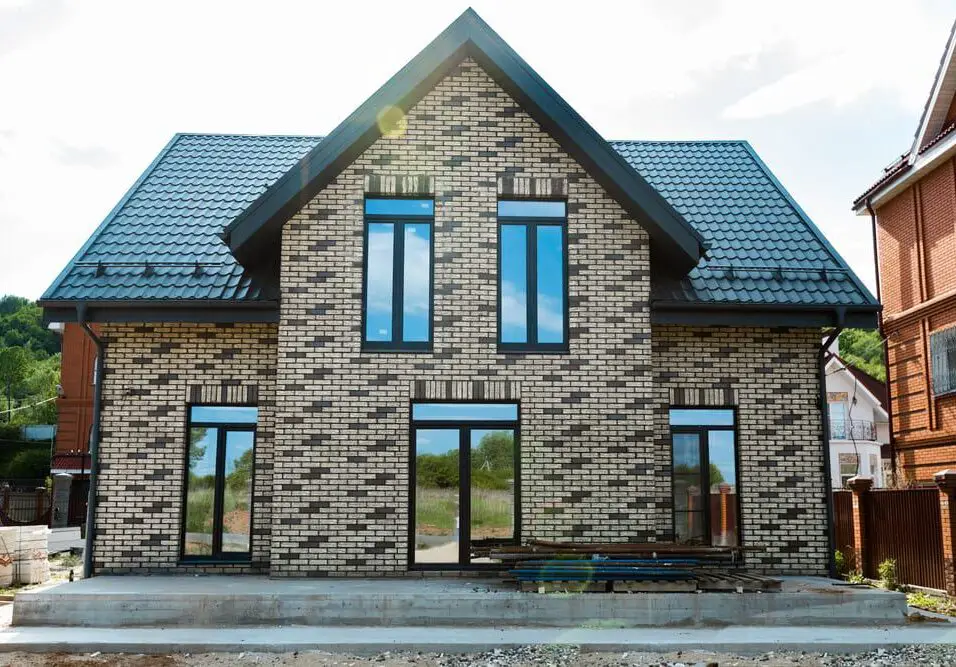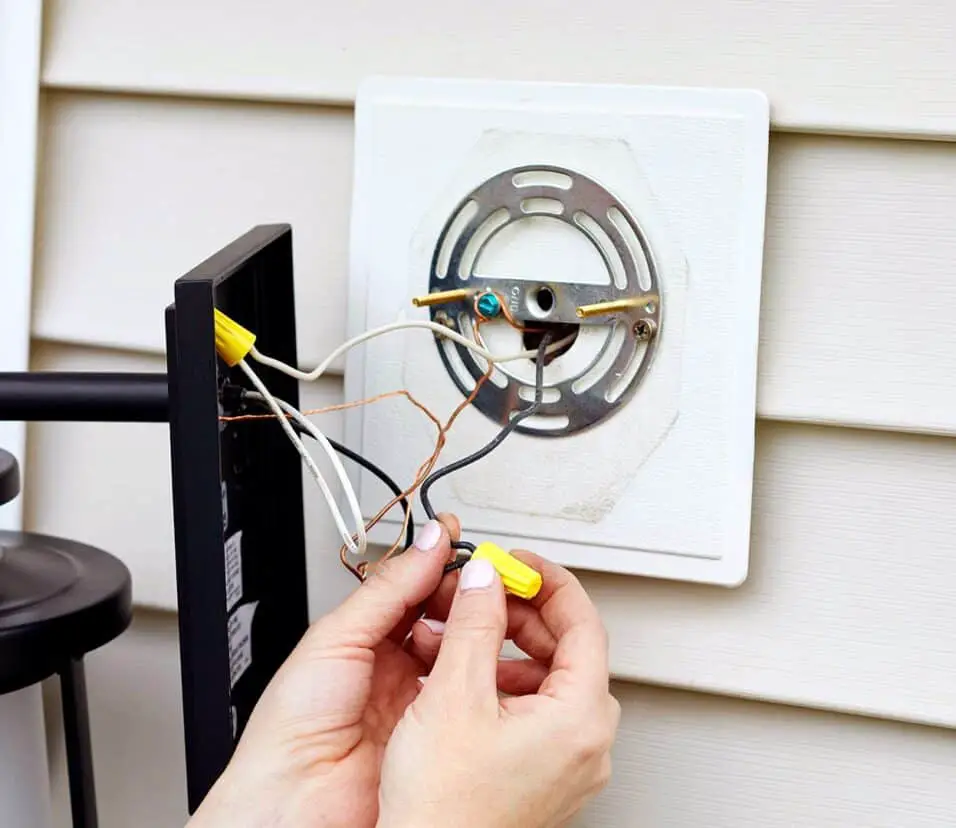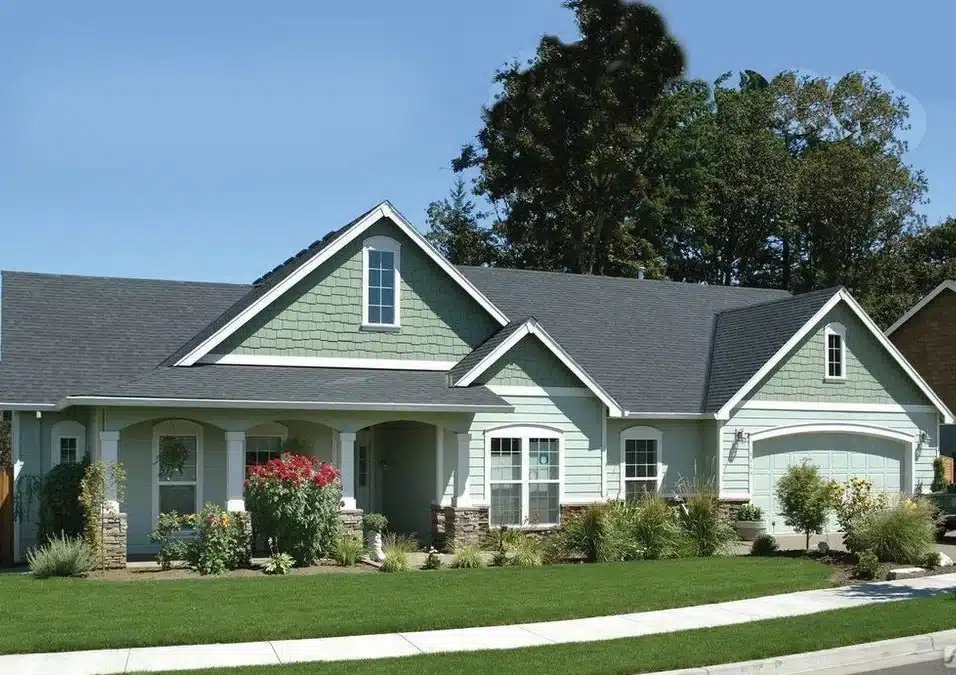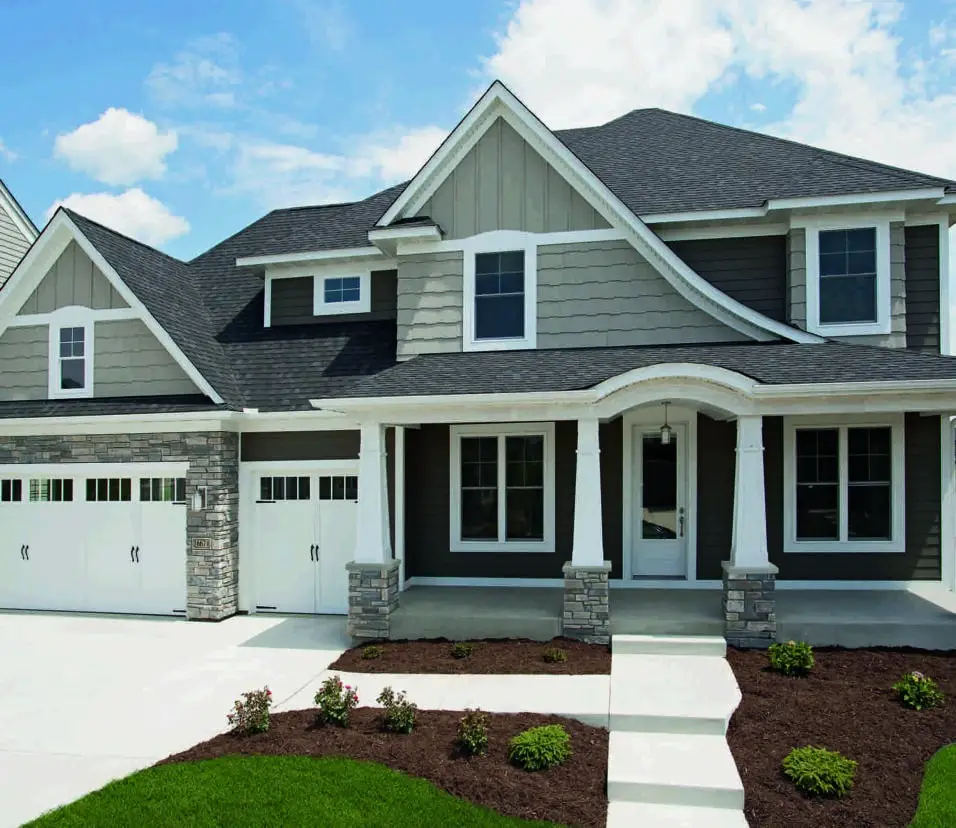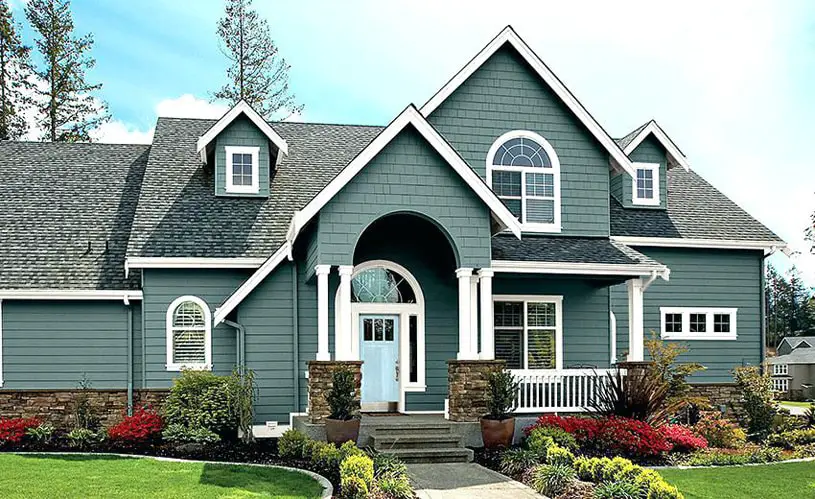How Many Gallons Of Paint For Exterior Of House
Introduction
How Many Gallons Of Paint For Exterior Of House: The comprehensive guide on determining the optimal quantity of paint required for the exterior of your house. Whether you’re preparing to refresh the appearance of your home, embarking on a full-scale renovation, or simply aiming to enhance its curb appeal, understanding how many gallons of paint you need is an essential first step. A well-painted exterior not only safeguards your residence against the elements but also expresses your personal style and adds value to your property. In this guide, we will delve into the key factors that influence paint coverage, helping you make an informed decision and ensuring that your painting project proceeds smoothly. From considering the surface area to factoring in paint types, textures, and colors, we’ve got you covered with all the insights you need to accurately estimate the gallons of paint required for your house’s exterior.
In the realm of home improvement endeavors, few undertakings are as transformative as giving your house exterior a fresh coat of paint. The process not only rejuvenates the appearance of your dwelling but also serves as a shield against the ravages of time and nature. As you prepare to embark on this exciting journey of revitalizing your home’s outer façade, one of the most common questions that arises is, “How much paint do I need?” The answer to this seemingly simple question is influenced by a myriad of factors that extend beyond the size of your house. The type of surface you’re painting, the texture of the material, the color you’ve chosen, and even the brand of paint can all impact the coverage and, subsequently, the amount of paint required. Overshooting your paint purchase can lead to unnecessary expenses, while underestimating might cause interruptions and discrepancies during your project.
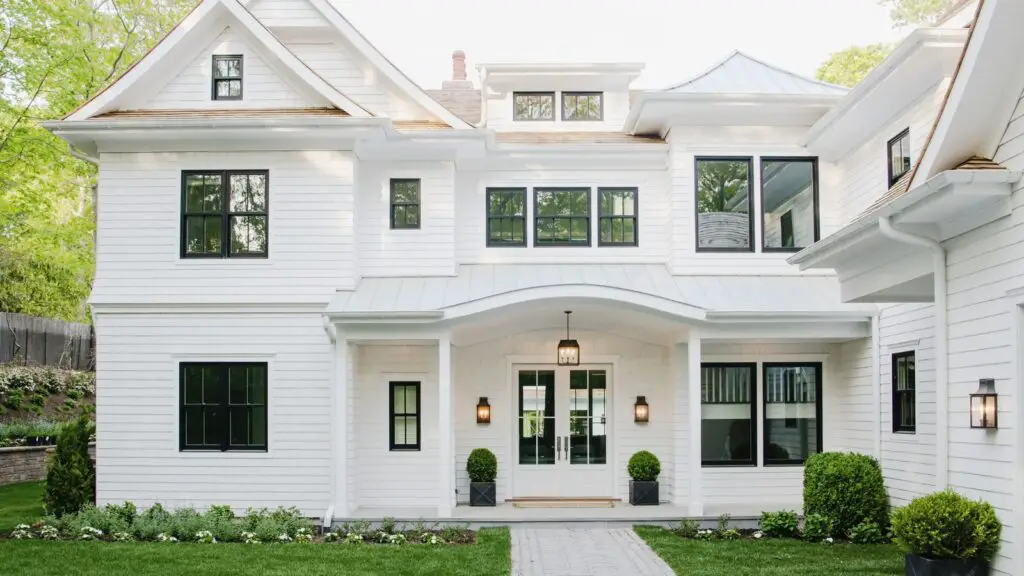
How much exterior paint for 2000 sq ft house?
The price of paint is actually a lesser factor in the total cost of an exterior painting job. The average single-story, 2,000 square-foot home can be completely covered with two coats by using six gallons of paint. That means you won’t save much money by going for inexpensive, low-quality paint.
Calculating Surface Area
The first step in estimating paint quantity is to determine the total surface area to be painted. For a 2000 square foot house, you need to account for all sides that require painting, including walls, doors, windows, and trim. Measure the height and length of each wall, multiply these dimensions to get the area, and then sum up all the areas to obtain the total square footage.
Factoring in Paint Coverage
Paint coverage efficiency varies based on factors such as surface texture, color, and type of paint. On average, a gallon of paint typically covers around 350 to 400 square feet with a single coat. However, this coverage may differ for darker colors or rough surfaces, which might require additional coats.
Estimating Paint Quantity
To estimate the amount of paint required, divide the total square footage by the average coverage per gallon. For instance, if a gallon covers 375 square feet and your total surface area is 2000 square feet, you would need around 5.33 gallons of paint for one coat. Since you can’t buy a fraction of a gallon, you would need to round up to 6 gallons to ensure you have enough paint to cover the entire surface with at least one coat.
Consider Multiple Coats
While a single coat of paint might suffice in some cases, it’s often recommended to apply two coats for better coverage and longevity. This means that for a 2000 square foot house, you might need around 12 gallons of paint (6 gallons for each coat).
How much area does 1 Litre of paint cover?
As a general guide 1L of Dulux Wall, Dulux Trim or Dulux Ceiling paint covers approximately 16m squared, while 1L of Dulux Primer will cover approximately 14m squared. We’ve put together some guides below based on a range of project sizes.
Type of Paint
Different types of paint, such as interior wall paint, exterior paint, primer, and specialty paints, have varying coverage rates. For instance, high-quality paints with better pigmentation and higher solids content often provide better coverage compared to lower-grade paints.
Surface Texture
The texture of the surface being painted can significantly affect coverage. Smooth surfaces tend to require less paint compared to rough or porous surfaces, which may absorb more paint. If the surface is uneven or has a lot of imperfections, it might require additional coats of paint to achieve full coverage.
Application Method
The method of paint application also plays a role in coverage. Using a brush, roller, or spray gun can lead to different coverage rates. Rollers and spray guns often provide more even coverage compared to brushes, which might leave variations in thickness.
Color and Opacity
The color of the paint and its opacity (how well it covers the underlying surface) can influence coverage. Darker colors or colors with lower opacity may require more coats to achieve the desired finish and coverage.
How much paint is 1 gallon?
350 to 400 square feet
Paint usually is applied at 350 to 400 square feet per gallon (primer at 200 to 300 square feet per gallon). Use the Area section below to calculate the walls and ceiling values. Use the Number of Doors and Windows section to calculate the Doors and Windows values.
Measurement and Equivalence
A gallon is a unit of volume measurement in both the imperial and U.S. customary systems. In the U.S., 1 gallon is equivalent to approximately 3.785 liters, while in the imperial system used in the UK and some other countries, 1 gallon is about 4.546 liters. However, for the purpose of this discussion, we’ll consider the U.S. gallon.
Coverage Area
The amount of area that 1 gallon of paint can cover depends on various factors, including the type of paint, the surface being painted, and the application method. On average, a gallon of paint typically covers around 350 to 400 square feet (about 32.5 to 37.2 square meters) with a single coat. This estimation assumes that the surface is relatively smooth and the paint is being applied using a roller or brush. If you’re using a spray gun, coverage might be slightly different.
Surface Texture and Color
Rough or porous surfaces tend to absorb more paint, which can reduce coverage efficiency. Similarly, dark or bold colors may require more coats to achieve full coverage, impacting the area covered by a gallon of paint. Manufacturers often provide guidelines on the coverage of their specific paint products based on different factors.
Multiple Coats
For optimal results, it’s common to apply two coats of paint. This not only provides better coverage but also enhances the paint’s durability and appearance. When calculating how much paint you need, consider this second coat, which effectively doubles the amount of paint required for the entire project.
How much exterior paint for 3000 sq ft?
The average two story home (about 2,500 square feet) will take 22 to 25 gallons of paint for siding, soffits, and overhangs and 3 to 5 gallons for accented trim. For a larger home (around 3000 square feet), it will take 25 to 30 gallons and 5 to 7 gallons for the accented trim.
Calculating Surface Area
The first step is to accurately measure the total surface area to be painted. For a 3000 square foot area, you need to consider all sides of the exterior that require painting, including walls, doors, windows, and any additional architectural features.
Coverage Efficiency
Paint coverage is typically measured in square feet per gallon. However, the coverage efficiency can vary based on factors like paint type, surface texture, and color. On average, a gallon of paint covers around 350 to 400 square feet with a single coat. But it’s important to consider that certain paints may offer higher or lower coverage rates.
Number of Coats
For the best results and a uniform finish, applying two coats of paint is often recommended. This means that you’ll need twice the amount of paint calculated for a single coat. Keep in mind that a second coat enhances the paint’s durability, color vibrancy, and overall appearance.
Estimating Paint Quantity
To estimate the quantity of paint required for a 3000 square foot area with a single coat, divide the total area by the average coverage of a gallon of paint. For example, if a gallon covers 375 square feet, you’d need around 8 gallons for one coat. For two coats, you would need approximately 16 gallons.
How much exterior paint for 1600 sq ft?
Whether you’re painting a powder room or the exterior of your house, paint coverage is fairly universal. The general rule of thumb is one gallon per 400 square feet.
Coverage Efficiency
Paint coverage can vary based on factors like the type of paint, surface texture, and color. On average, a gallon of paint typically covers around 350 to 400 square feet with one coat. However, it’s important to consult the manufacturer’s guidelines for the specific paint you’re using, as coverage rates can differ.
Number of Coats
For a professional and long-lasting finish, it’s recommended to apply two coats of paint. This enhances the color consistency, durability, and overall appearance of the paint job. Therefore, you’ll need to calculate the paint requirement for both coats.
Estimating Paint Quantity
To estimate the quantity of paint needed for a 1600 square foot area, start by calculating the coverage of one coat. Divide the total area by the average coverage of a gallon of paint. If a gallon covers 375 square feet, you’d need around 4.27 gallons for one coat. For two coats, double this amount to approximately 8.54 gallons.
Surface Texture and Color
Keep in mind that rough or porous surfaces might absorb more paint, potentially reducing coverage efficiency. Additionally, darker colors or colors with lower opacity might require additional coats to achieve the desired finish.
How much does a Litre of exterior paint cover?
However, a general rule of thumb is that most paints have a coverage rate of about 350 square feet per 4 litres. This means that for every litre of paint that you use, you can cover an area of 87 square feet.
Coverage Efficiency
The coverage of a liter of exterior paint depends on several factors, including the type of paint, surface texture, color, and application method. On average, a liter of paint typically covers around 10 to 12 square meters (about 108 to 129 square feet) with one coat. This estimation is based on a smooth surface and standard application techniques.
Surface Texture and Absorption
Rough or porous surfaces tend to absorb more paint, which can reduce coverage efficiency. If the exterior surface you’re painting has uneven texture or is highly absorbent, you may need more paint to achieve the desired coverage.
Color and Opacity
The color of the paint can impact coverage as well. Darker colors or colors with lower opacity might require additional coats to achieve full coverage. Lighter colors generally cover better in fewer coats.
Application Method
The method you use to apply the paint also affects coverage. Using a roller, spray gun, or brush can result in slightly different coverage rates. Rollers and spray guns often provide more even coverage compared to brushes.
How long do gallons of paint last?
This depends on whether you’ve maintained the proper storage conditions. New, never-opened cans of latex or oil paint usually last about three years. If you store a can of opened paint properly and don’t expose the paint to air, it may last up to a couple of years.
Paint Type and Quality: The type and quality of paint play a significant role in determining how long it will last. High-quality paints tend to have better pigments and binders, resulting in increased durability and resistance to fading. Acrylic and latex paints generally have a longer lifespan than oil-based paints.
Storage Conditions: Proper storage is crucial for extending the lifespan of paint. Paint should be stored in a cool, dry place, away from direct sunlight and extreme temperatures. Fluctuations in temperature can cause the paint to degrade, leading to changes in consistency and color.
Sealing the Lid: The way you seal the paint can affect its longevity. A tightly sealed lid prevents air from entering the container and causing the paint to dry out. Using a rubber mallet to gently tap the lid closed can create an airtight seal.
Contamination: Contaminants, such as dust or debris, can compromise the quality of the paint. Make sure to clean the rim of the paint can before sealing it, as a clean seal helps prevent air and contaminants from getting in.
How do you calculate paint?
As a rule of thumb, one gallon of quality paint will usually cover 400 square feet. One quart will cover 100 square feet. Because you need to cover 328 square feet in this example, one gallon will be adequate to give one coat of paint to the walls. (Coverage will be affected by the porosity and texture of the surface.
Determine the Surface Area
The first step in calculating paint is to measure the surface area you intend to paint. The formula for calculating the surface area of a rectangular or square surface is:
Surface Area = Length × Width
For more complex shapes or surfaces with multiple sections, break them down into simpler shapes and calculate the surface area of each section separately. Add up the individual surface areas to get the total surface area.
Account for Doors and Windows
Subtract the surface area of doors and windows from the total surface area. This will give you the actual area that needs to be painted. The formula is:
Actual Paint Area = Total Surface Area – Area of Doors and Windows
Consider Paint Coverage
Paint coverage refers to the area that a specific amount of paint can cover. This information is typically provided by paint manufacturers on the paint can label. It is usually measured in square feet per gallon (sq ft/gal) and varies based on factors such as paint type, texture, and color.
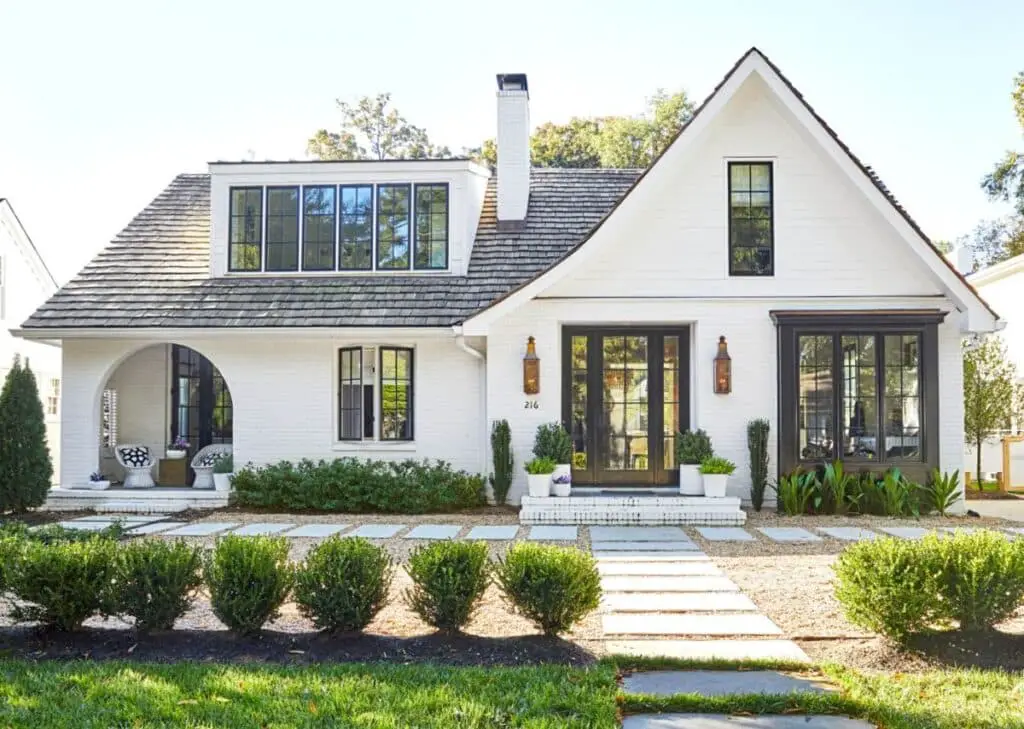
Conclusion
Estimating how many gallons of paint are needed for the exterior of your paint house is a vital aspect of any successful painting project. Beyond the simple equation of area and paint coverage, this process involves a nuanced understanding of various factors that influence the final result. By delving into the intricacies of your house’s surface area, considering the texture, color, and type of paint, and factoring in the inefficiencies of real-world application, you can arrive at a much more accurate estimate. Remember that it’s always better to have a slight surplus of paint rather than falling short mid-project. An extra gallon or two can serve as a safeguard against unexpected touch-ups and adjustments. Equally important is choosing high-quality paint that aligns with the unique needs of your environment, ensuring not only an aesthetically pleasing outcome but also long-lasting protection.
With this guide’s advice, you can confidently and precisely paint the exterior. You can make your home’s exterior a vivid and durable reflection of your style by balancing practicality and creativity. If you want to improve your home’s curb appeal, value, or aesthetic, you need to know how many gallons of paint it needs. Setting the number of gallons of paint needed for your home’s exterior is a crucial step between imagination and reality. It represents the synergy between your artistic goals and the project’s technical aspects, not just a calculation. The complexities of surface area assessment, paint covering efficiency, and paint kinds and finishes take you beyond aesthetics. Protecting, rejuvenating, and weatherproofing your home’s exterior is the goal.




